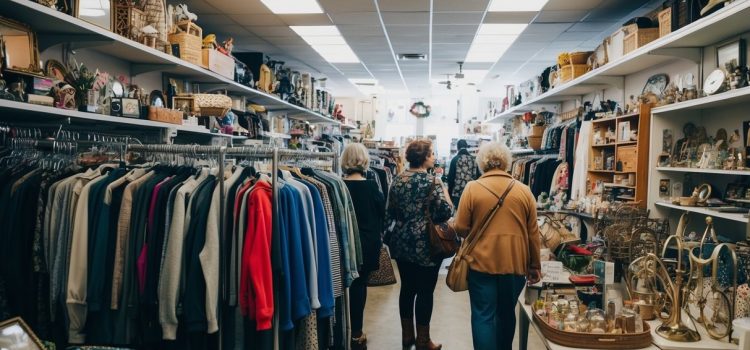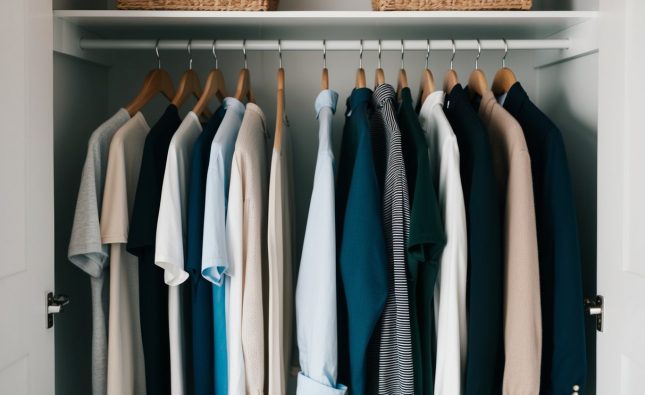
Thrift shopping can be an exciting way to discover unique items while saving money. With a little strategy, anyone can uncover quality finds that stand out from mainstream retail offerings. Knowing what to look for and how to shop effectively transforms a thrift store visit into a treasure hunt.

By focusing on specific brands and materials, savvy thrifters can spot high-quality garments and accessories. Researching local thrift shops and their reputations also helps in identifying the best locations for a successful shopping experience. Being patient and persistent often leads to rewarding discoveries that may not appear at first glance.
Understanding how to assess the condition of items and being open to upcycling or tailoring can further enhance the thrift shopping experience. They can find that perfect vintage piece or designer item with a keen eye and a bit of imagination. These tips will elevate the thrift shopping journey, making it both enjoyable and fruitful.
Understanding Thrift Shopping
Thrift shopping offers unique opportunities for quality finds at budget-friendly prices. It includes various benefits and involves different store types that cater to diverse shopping needs.
Benefits of Thrift Shopping
Thrift shopping provides several advantages, making it an appealing choice for many. Affordability is one of the most significant benefits, as shoppers can find high-quality items at a fraction of retail prices. This allows for more significant savings, which can be redirected to other purchases or experiences.
Sustainability is another key aspect. By purchasing second-hand items, shoppers contribute to reducing waste and promoting a circular economy. This practice supports environmental sustainability by minimizing the demand for new products.
Lastly, thrift stores often carry a variety of unique, vintage items that cannot be found in typical retail settings. This can lead to unexpected discoveries, allowing shoppers to express their personal style through curated finds.
Thrift Store Types and Formats
Thrift stores come in various types, each serving distinct purposes and clientele. Non-profit organizations, such as Goodwill or The Salvation Army, operate thrift stores that support charitable programs. Purchases at these stores directly contribute to community services.
Consignment shops allow individuals to sell their gently used items, providing them with a percentage of the sale when the item sells. This model benefits sellers while offering shoppers unique, high-quality finds.
Online thrift platforms, like ThredUp or Poshmark, have gained popularity, enabling users to browse and purchase items from the comfort of home. These platforms often feature a wide range of brands and styles, making them suitable for any shopper’s taste.
Each store type presents distinct advantages, catering to different needs and enhancing the overall thrift shopping experience.
Strategies for Finding Quality Items
Finding quality items while thrift shopping requires a strategic approach. Timing and thorough inspection can significantly affect the outcomes during these shopping trips.
Knowing When to Shop
Timing is crucial for thrift shopping. The best times to visit thrift stores are often early in the week. This is when new inventory is typically sorted and placed on the shelves.
Patience also plays a role. Visiting the store consistently can yield better finds. Seasonal changes often result in fresh stock, so shopping after holidays or during seasonal transitions may uncover high-quality items.
Tip: Consider visiting during sales events, as many thrift stores offer discounts on certain days. Joining store mailing lists can keep shoppers informed about these events.
Inspecting Items Thoroughly
Each item should be inspected carefully before purchase. This includes checking for signs of wear, stains, or damage.
Moving beyond visual inspection involves understanding fabrics and materials. Knowledge about common fabrics can assist in identifying quality items. For example, natural fibers like wool or cotton generally last longer than synthetic options.
Checklist for Inspection:
- Condition: Look for rips, tears, or discoloration.
- Functionality: Check zippers, buttons, and seams.
- Quality Tags: Brand labels can indicate craftsmanship.
Taking the time for a thorough check can prevent future disappointment and ensure a wise investment.
Navigating the Thrift Shopping Experience

Understanding how to navigate thrift shopping can enhance the experience and yield better results. Skillful bargaining and establishing rapport with staff can lead to more valuable finds and potential discounts.
Effective Bargaining Techniques
Bargaining at thrift stores differs from traditional retail. Customers should approach negotiations respectfully and with reasonable expectations.
- Start by politely asking if a lower price is possible.
- Highlight minor flaws in items as a basis for requesting a discount.
- Use comparable prices from other locations to strengthen the case for a lower price.
It’s often useful to choose off-peak hours for bargaining when staff may have more time. Building a friendly rapport can also increase the likelihood of receiving discounts.
Building Relationships with Staff
Developing connections with thrift store employees can be beneficial. Familiar faces are less likely to overlook a loyal customer.
- Engage staff by asking for advice on items they love or tips on thrift hunting.
- Visit regularly to cultivate recognition and trust.
- Respect their expertise; employees often know the best merchandise and when it arrives.
Having a positive relationship with staff can lead to insights about incoming inventory, rare finds, or special promotions that aren’t publicized.
Caring for Secondhand Finds
Caring for secondhand items is essential for their longevity. Proper maintenance can help preserve quality and enhance aesthetics.
1. Cleaning
Before using, secondhand items should be thoroughly cleaned. Different materials require different cleaning methods:
- Clothing: Wash according to the label. Use gentle detergents.
- Furniture: Wipe down surfaces with a damp cloth and mild cleaner.
- Accessories: Use appropriate cleaners for specific materials like leather or metal.
2. Repairing
Minor repairs can extend the life of thrifted items. Consider:
- Sewing loose buttons or hems.
- Fixing scratches with touch-up paint or polish.
- Replacing broken zippers or missing pieces.
3. Storing
Proper storage protects secondhand treasures from damage:
- Clothing: Store in breathable garment bags to prevent dust and pests.
- Furniture: Keep away from direct sunlight to avoid fading.
- Accessories: Use boxes or pouches to prevent scratches.
4. Regular Maintenance
Routine care prevents deterioration. He or she should:
- Inspect items regularly for signs of wear.
- Address any issues promptly to avoid worsening damage.
- Refresh items with sprays or conditioners tailored to specific materials.
Through systematic care, secondhand finds can retain their charm and usability for years to come.












